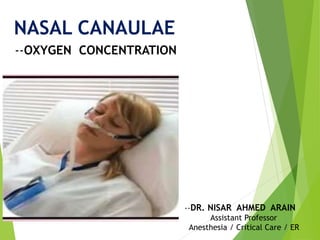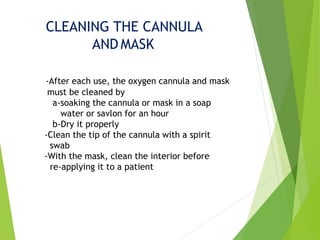This document discusses oxygen administration through nasal cannulae and masks. It begins by introducing oxygen, its properties, sources, and uses in industries and therapy. It then defines oxygen administration and lists the sources of therapeutic oxygen in hospitals. The purposes, indications, equipment, and procedures for administering oxygen via nasal cannula and mask are described in detail. Precautions for oxygen administration and potential side effects are also outlined.



























